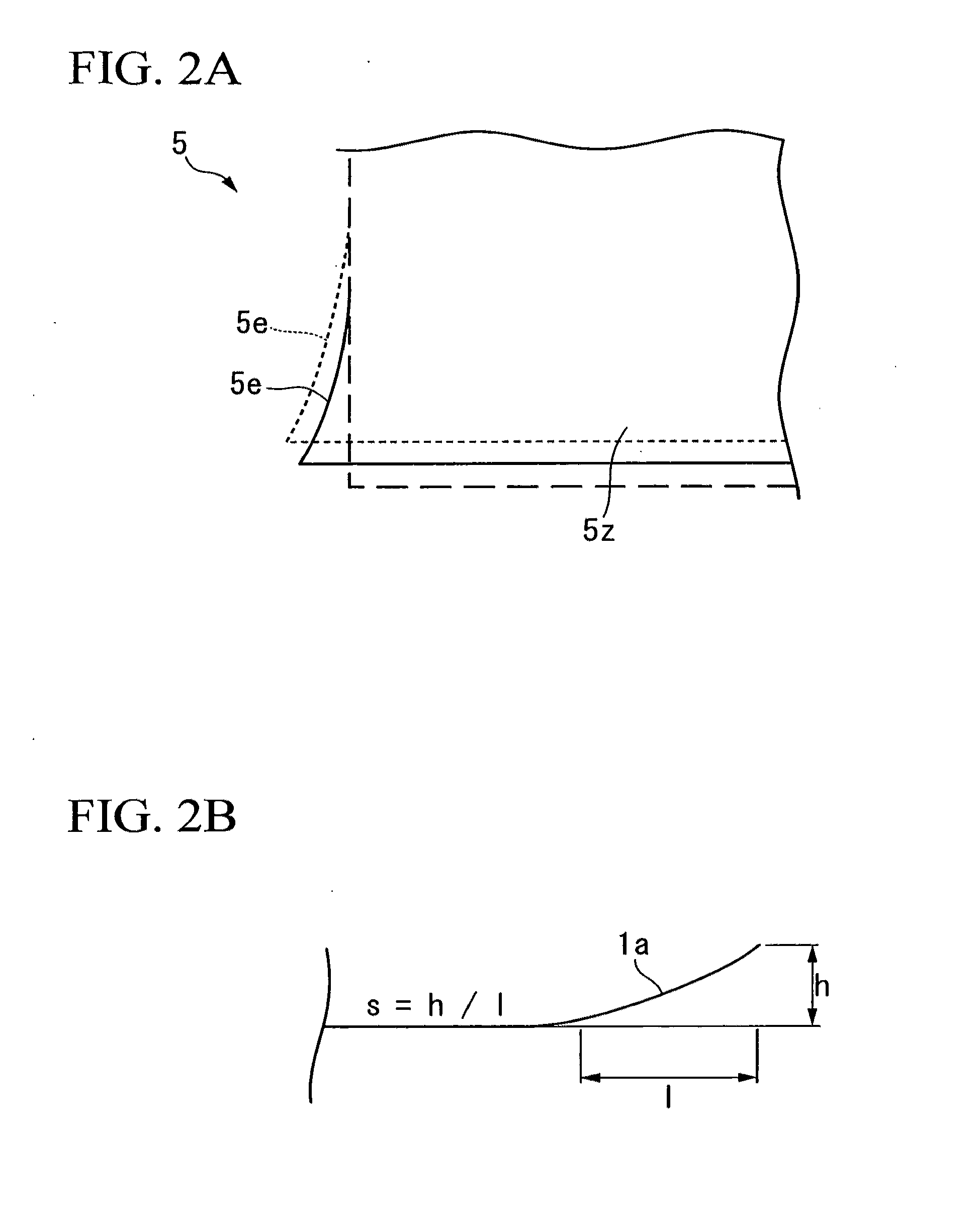Grain-oriented electrical steel sheet and producing method therefor
a technology of electrical steel and grain orientation, which is applied in the direction of manufacturing tools, furnaces, heat treatment equipment, etc., can solve the problems of increasing the width of the milling, reducing the yield, and difficult to accurately control the application region, so as to achieve the effect of improving yield, reducing the milling width in the post-process and high speed
- Summary
- Abstract
- Description
- Claims
- Application Information
AI Technical Summary
Benefits of technology
Problems solved by technology
Method used
Image
Examples
example 1
[0130]An example of the first embodiment of the present invention will be described.
[0131]A CO2 laser was used as the laser device 2 in FIG. 5. A laser power P was controlled to be 1500 W by an electrical input and a condensing shape of the laser was a circular shape with 0.2 mmφ. A steel sheet (grain-oriented electrical steel sheet) 1 with a width of 1000 mm and a thickness t of 0.23 mm after decarburization annealing was fed at a velocity VL of 1000 mm / s in the L direction.
[0132]A distance a, which is a laser beam irradiation position, was spaced by 20 mm from an end face of the steel sheet, a surface in one side of the steel sheet was irradiated with a laser beam over the entire length of the coil (entire length in the L direction), and thereby a groove was formed. As assist gas, dried air under a pressure of 0.5 MPa was used. The cross-sectional shape of the formed groove portion had dimensions: a width W of substantially 0.2 mm and a depth d of substantially 0.02 mm. In this ca...
example 2
[0135]An example of the second embodiment of the present invention will be described.
[0136]A semiconductor laser was used as the laser device 2 of FIG. 7. In the semiconductor laser device, a laser power P could be changed up to 2 kW. In addition, the laser power P could be arbitrarily set using a laser power control device (not shown).
[0137]The laser power P was set to 1000 W, and a condensing shape was set to an elliptical shape where dc was 1.2 mm, and dL was 12 mm. A steel sheet 1 after decarburization annealing, which had a width of 1000 mm and a thickness t of 0.23 mm, was fed in the L direction at a velocity VL of 400 mm / s.
[0138]The distance a from the end face of the steel sheet, which is the irradiation position of the laser beam, was set to 20 mm, and a surface in one side of the steel sheet was irradiated with the laser beam over the entire length (the entire length in the L direction) of the coil. In this case, the energy density Ed of the laser beam was 2.7 J / mm2.
[0139]...
example 3
[0145]Next, the inventors investigated a preferred range of the energy density Ed of the laser irradiation in the second embodiment. That is, the inventors investigated the relationship between the degree of grain refining in the laser irradiation portion and the energy density Ed under a condition where the distance a was 20 mm. Here, the feeding speed VL was set to 1000 mm / s, and the diameter dc of the laser beam in the C direction was set to a constant value of 1.2 mm. The Ed expressed by the above-described Equation (3) was changed by changing the laser power P within a range of 200 to 5000 W and then investigated a crystal state (metallographic structure) of the steel sheet after the secondary recrystallization.
[0146]As a result, when the energy density Ed was 0.5 J / mm2 or more, it was possible to generate a predetermined crystalline structure (linear grain boundary) at the time of the final annealing. However, when the energy density Ed was less than 0.5 J / mm2, it was difficul...
PUM
| Property | Measurement | Unit |
|---|---|---|
| Width | aaaaa | aaaaa |
| Width | aaaaa | aaaaa |
| Distance | aaaaa | aaaaa |
Abstract
Description
Claims
Application Information
 Login to View More
Login to View More - R&D
- Intellectual Property
- Life Sciences
- Materials
- Tech Scout
- Unparalleled Data Quality
- Higher Quality Content
- 60% Fewer Hallucinations
Browse by: Latest US Patents, China's latest patents, Technical Efficacy Thesaurus, Application Domain, Technology Topic, Popular Technical Reports.
© 2025 PatSnap. All rights reserved.Legal|Privacy policy|Modern Slavery Act Transparency Statement|Sitemap|About US| Contact US: help@patsnap.com



